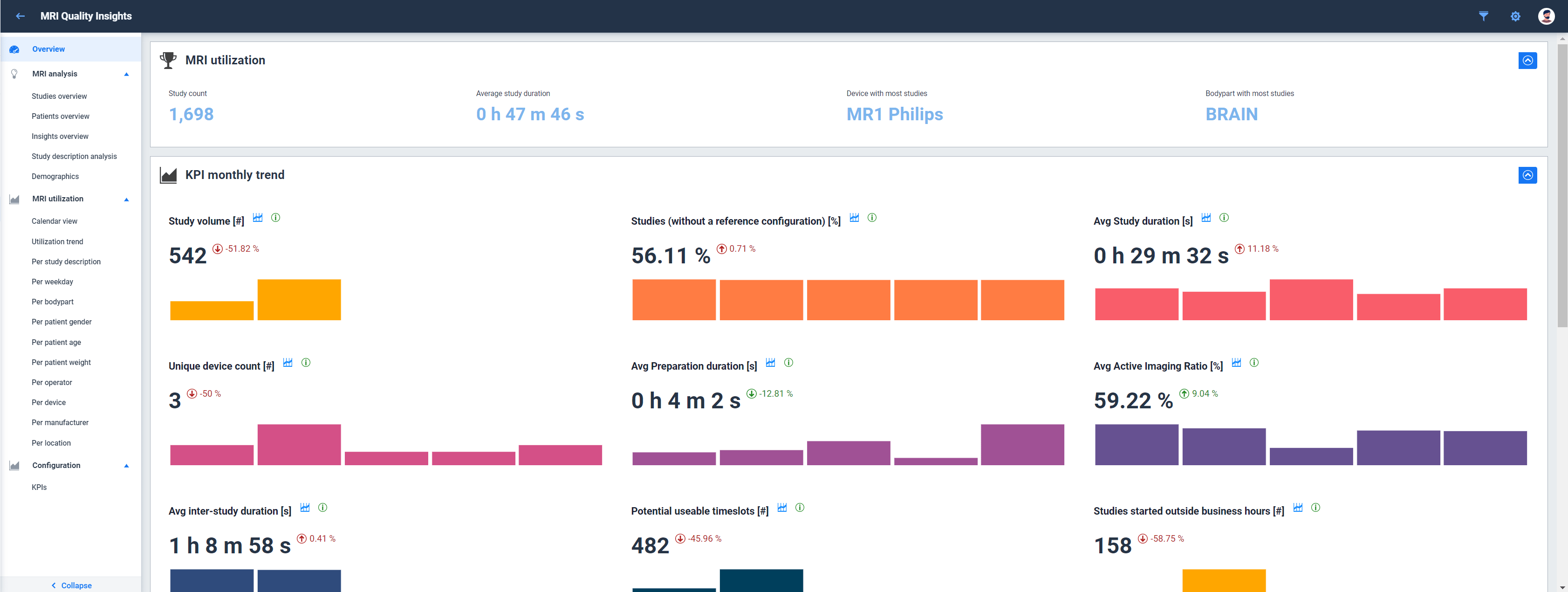Qaelum announces release of a novel software solution for MRI Efficiency
November 25, 2022
Leuven, Belgium — Qaelum, an advanced software provider focused on radiology, is releasing a novel module for monitoring and improving performance in MRI departments: FOQAL – MRI Efficiency. The new vendor-neutral solution automatically collects all MRI study information to create an advanced data model and analyze MRI device utilization, highlight quality issues and empower optimization in the radiology department. MRI efficiency is a standalone module of Qaelum’s foqal cloud platform, comprised of multiple quality and efficiency management tools including CT repeat, Contrast, and Forms. It will be officially launched during RSNA 2022 at Qaelum’s booth 3201.
Magnetic Resonance Imaging (MRI) is a common imaging modality due to its superior ability to visualize soft tissue that does not require patient exposure to ionizing radiation. It has seen a steady growth in usage and is characterized by higher costs compared to general X-ray, computed tomography, ultrasound, and fluoroscopy. However managing and analyzing MRI device usage, service turnaround times, throughput, and staff/patient scheduling is currently a complex task that requires ample time in the already busy radiology environment, especially considering the variety of MRI modality vendors. MRI efficiency by Qaelum offers a solution with the following capabilities:
Automatic and vendor neutral data collection
- MRI efficiency flawlessly integrates with any PACS or scanner directly
- Analyses are performed automatically in the background requiring minimal to no supervision
Key performance indicators
- Performance metrics for study duration, preparation time, study composition, inter-sequence duration, and many more are customizable and available directly on the overview page
- Patient safety metrics ensure specific energy dose (SED) and specific absorption rates (SAR) do not exceed limits, facilitating awareness of potential radiofrequency injuries to patients resulting from higher than optimal tissue temperatures
- Device utilization metrics track occupancy rates and allow more patients to be imaged without requiring extra time
Trend monitoring
- Trend charts are automatically compiled for users to quickly spot outliers, such as excessive idle time and imbalances in device workload
- Coil usage trends between devices result in informed decisions on new coils and optimal returns on investment (ROI)
Protocol usage
- Protocol usage is monitored and compared between scanners in terms of composition, settings, coil usage and time requirements
- Insights are created to highlight protocol inhomogeneity between MRI devices and repeated sequences, guiding users towards potential improvements
Performance and cost analysis
- Technologist performance is analyzed and automatic insights are created for cases where training would be beneficial
- Financial liability assessment is performed employing customized cost configurations
For more information, please visit MRI Efficiency





